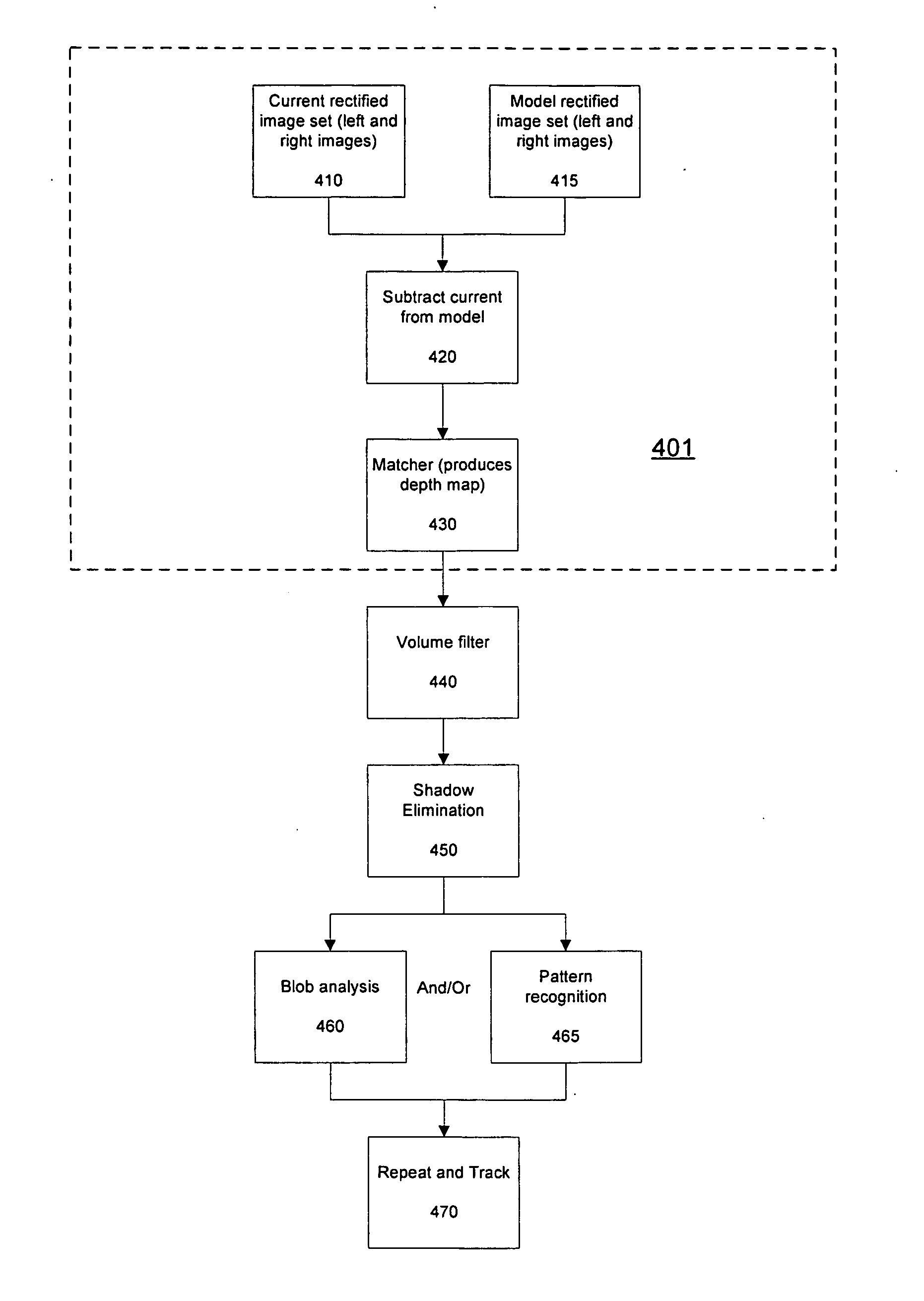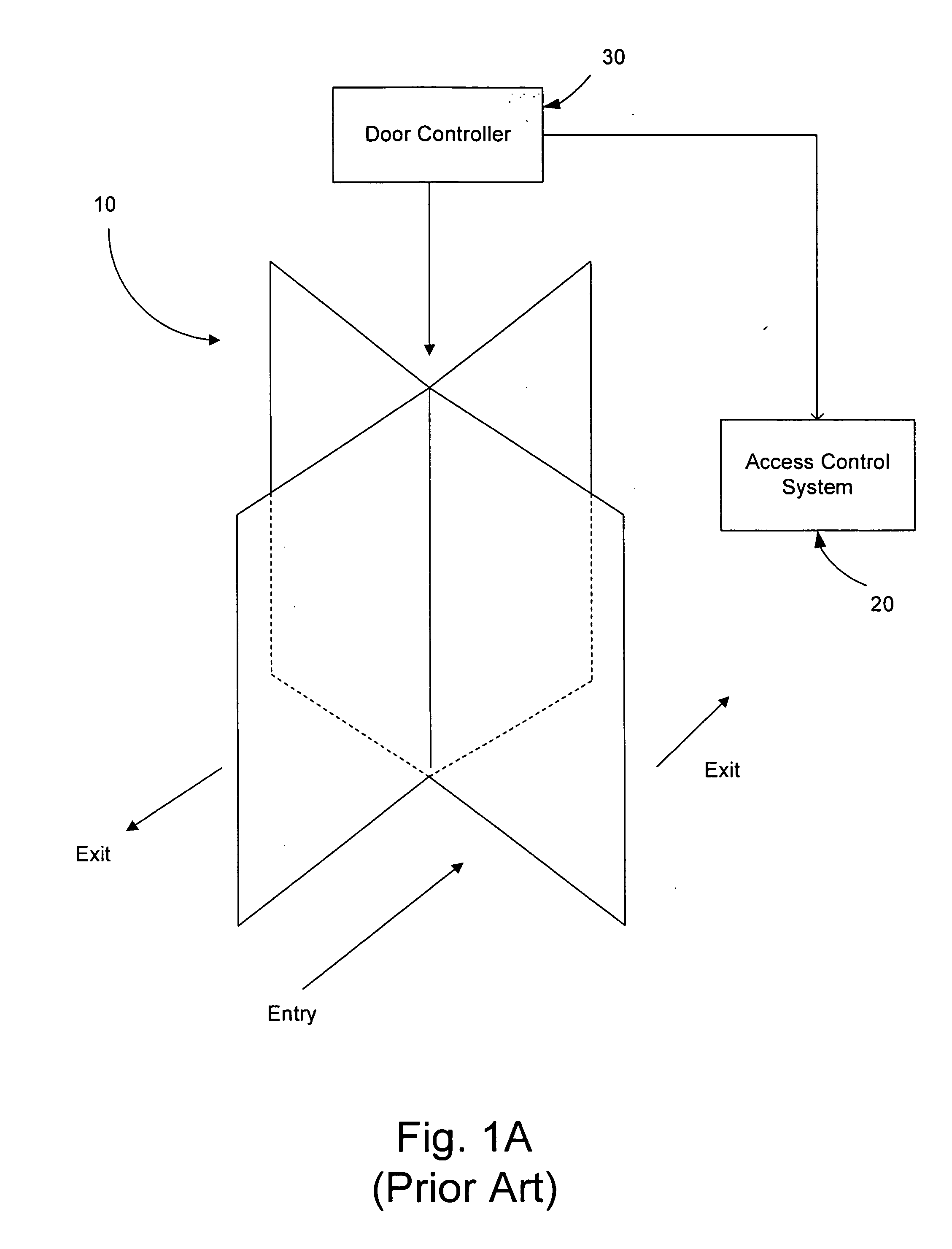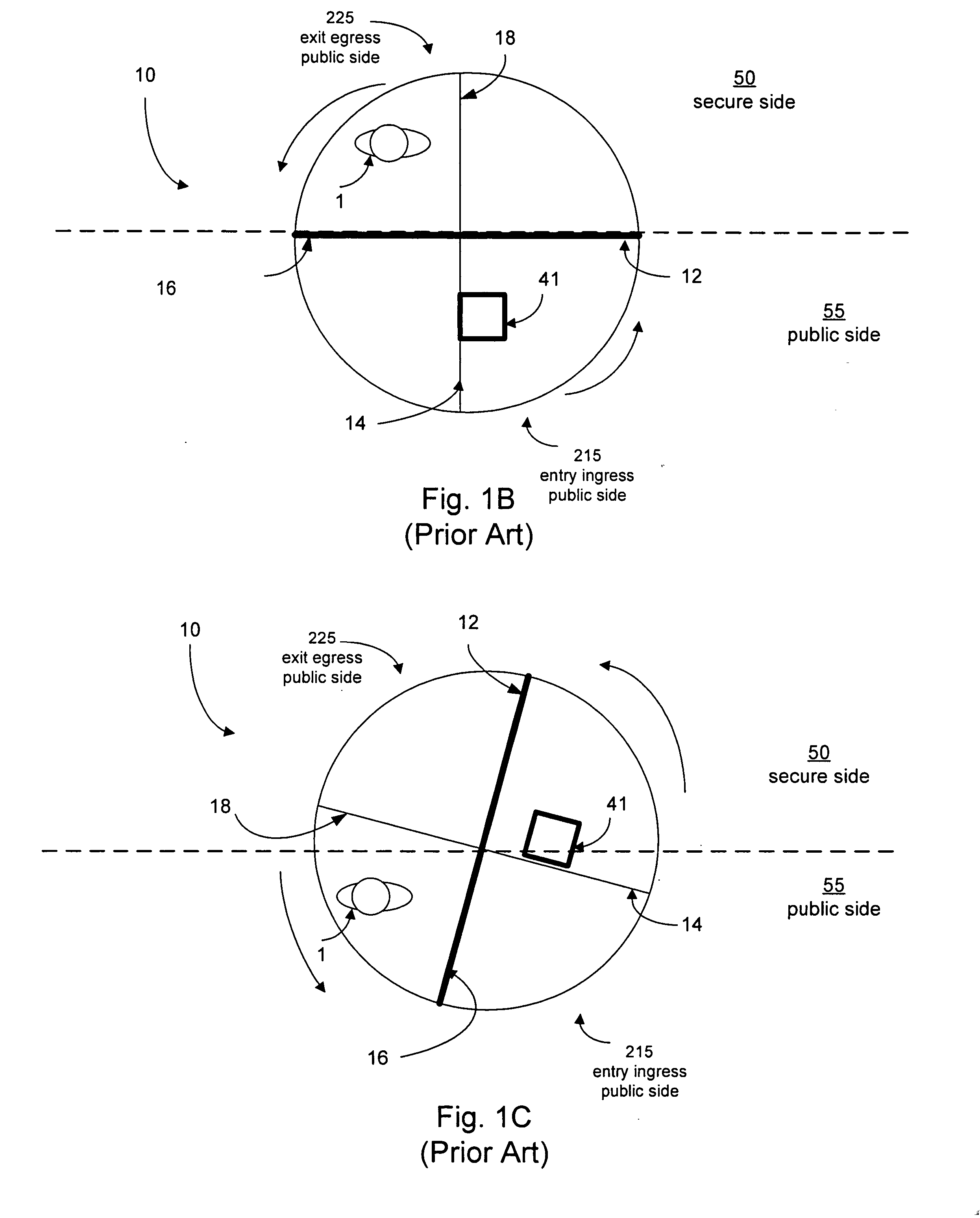Method and apparatus for detecting non-people objects in revolving doors
a technology for detecting non-people objects and revolving doors, applied in image analysis, instruments, computing, etc., can solve problems such as preventing security personnel, and achieve the effect of improving portal security
- Summary
- Abstract
- Description
- Claims
- Application Information
AI Technical Summary
Benefits of technology
Problems solved by technology
Method used
Image
Examples
Embodiment Construction
[0021] A description of preferred embodiments of the invention follows.
[0022] The present invention provides a method of detecting non-people objects within a revolving door chamber by first acquiring several two-dimensional (2D) images from different vantage points, and then computing a filtered set of 3D features of the door compartment by using both the acquired 2D images and model 2D images.
[0023]FIGS. 2A and 2B are top view diagrams of a revolving door illustrating a portal security system used to acquire a target volume in accordance with principles of the present invention. Referring to FIG. 2A, the entry leading quadrant 13 corresponds to the angles 0-90 degrees, the entry trailing quadrant 19 corresponds to 90-180 degrees, the exit leading quadrant 17 corresponds to 180-270 degrees and the exit trailing quadrant 15 corresponds to 270-360 degrees. The sensors 100a, 100b are spaced apart on opposite quadrants of the door 210 (i.e. the entry leading and exit leading quadrant...
PUM
 Login to View More
Login to View More Abstract
Description
Claims
Application Information
 Login to View More
Login to View More - R&D
- Intellectual Property
- Life Sciences
- Materials
- Tech Scout
- Unparalleled Data Quality
- Higher Quality Content
- 60% Fewer Hallucinations
Browse by: Latest US Patents, China's latest patents, Technical Efficacy Thesaurus, Application Domain, Technology Topic, Popular Technical Reports.
© 2025 PatSnap. All rights reserved.Legal|Privacy policy|Modern Slavery Act Transparency Statement|Sitemap|About US| Contact US: help@patsnap.com



